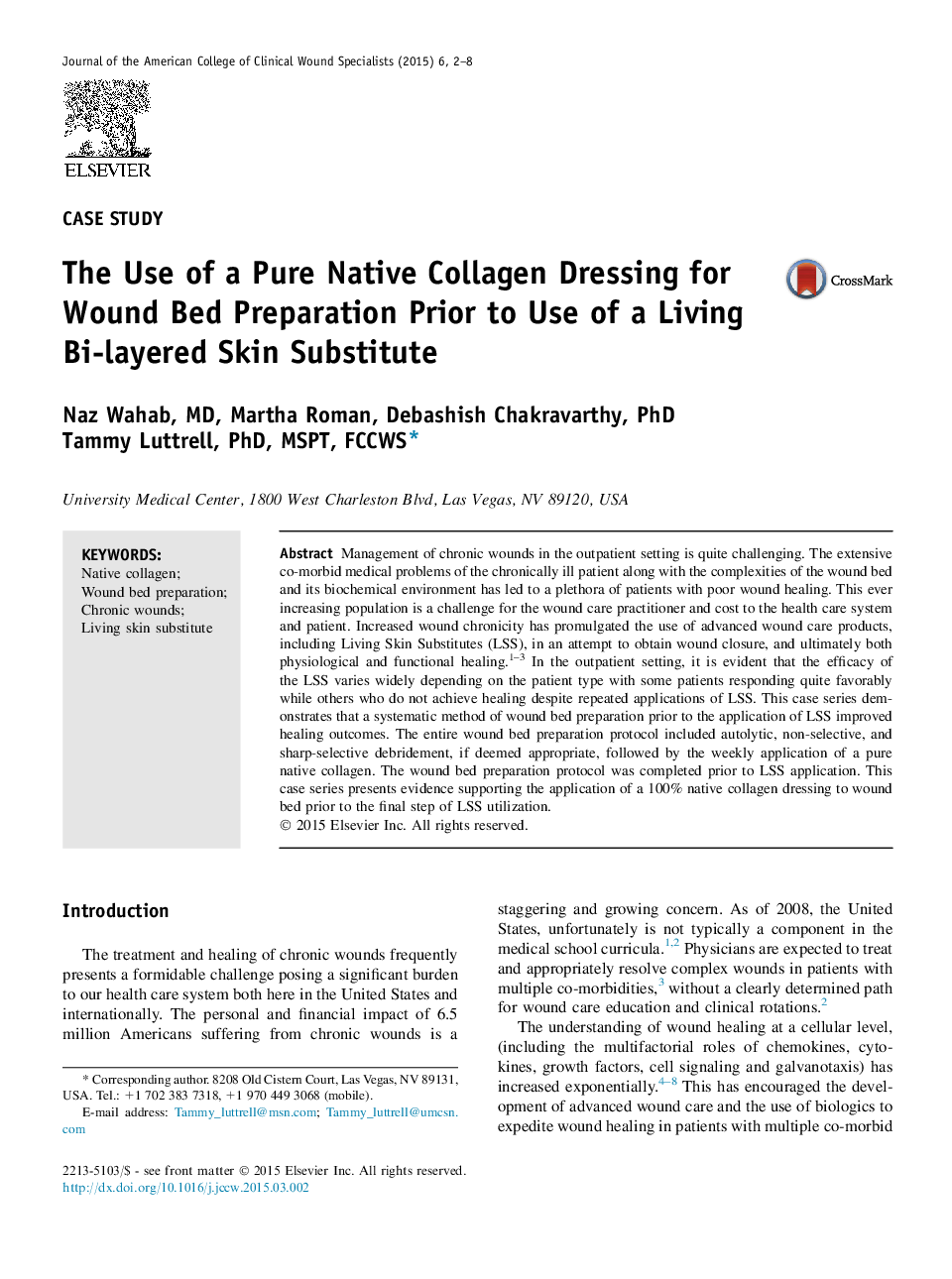| Article ID | Journal | Published Year | Pages | File Type |
|---|---|---|---|---|
| 2700428 | Journal of the American College of Clinical Wound Specialists | 2014 | 7 Pages |
Abstract
Management of chronic wounds in the outpatient setting is quite challenging. The extensive co-morbid medical problems of the chronically ill patient along with the complexities of the wound bed and its biochemical environment has led to a plethora of patients with poor wound healing. This ever increasing population is a challenge for the wound care practitioner and cost to the health care system and patient. Increased wound chronicity has promulgated the use of advanced wound care products, including Living Skin Substitutes (LSS), in an attempt to obtain wound closure, and ultimately both physiological and functional healing.1-3 In the outpatient setting, it is evident that the efficacy of the LSS varies widely depending on the patient type with some patients responding quite favorably while others who do not achieve healing despite repeated applications of LSS. This case series demonstrates that a systematic method of wound bed preparation prior to the application of LSS improved healing outcomes. The entire wound bed preparation protocol included autolytic, non-selective, and sharp-selective debridement, if deemed appropriate, followed by the weekly application of a pure native collagen. The wound bed preparation protocol was completed prior to LSS application. This case series presents evidence supporting the application of a 100% native collagen dressing to wound bed prior to the final step of LSS utilization.
Keywords
Related Topics
Health Sciences
Medicine and Dentistry
Orthopedics, Sports Medicine and Rehabilitation
Authors
Naz MD, Martha Roman, Debashish PhD, Tammy PhD, MSPT, FCCWS,
